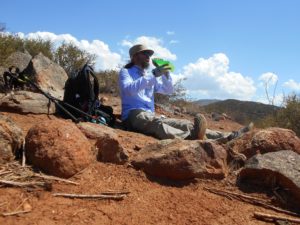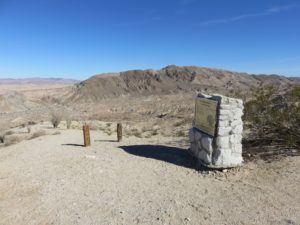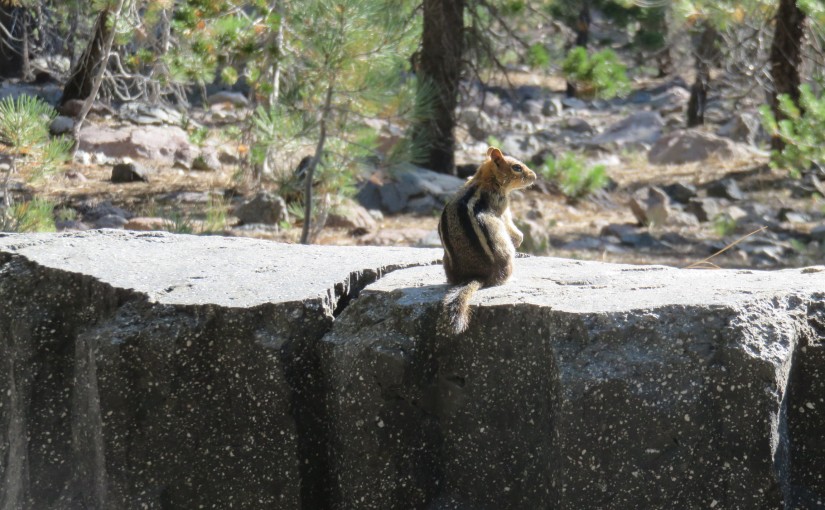“Once destroyed, nature’s beauty cannot be purchased at any price.” – Ansel Adams
“Wilderness is not a luxury but a necessity of the human spirit, and as vital to our lives as water and good bread. A civilization which destroys what little remains of the wild, the spare, the original, is cutting itself off from its origins and betraying the principle of civilization itself.” – Edward Abbey
Any outdoors person is probably familiar with the Leave No Trace principles. “Take only memories, leave only footprints,” is a basic summary. While those principles are an important part of my daily life, I prefer to go beyond Leave No Trace, and apply it beyond the intentions of what the usual principles really ever intended to cover. From simple outdoor ethics to minimalism and constant learning, this rule is a cornerstone of my lifestyle.
This is a continuation of my series about My Rules.

I could take this time to even create a simple list that will get you started on following the Leave No Trace (LNT) principles. I could list out the “seven principles”, even. But I won’t. This isn’t the post about that. Frankly, the intense focus on those principles and behaviors is a case I find all too often resulting in a “missing the forest for the trees” scenario. (By all means, learn those concepts, and follow them! Don’t miss the trees for the forest. Writing about and elaborating on my rule of Leave No Trace is simply not the place for me to elaborate on those.)
LNT, to me, should not be only about what you can do to keep a recreation area in the current shape it is in. It rather should go far beyond that. It should be about improving not only the area, but the lives of every person, animal, and plant that is connected to it. LNT is about improving the Earth for all living entities upon it, at large.
Consumerism and Minimalism
One of the most important parts of this LNT ideal for me is the idea of fighting against the consumerism that is frankly shoved down our throats. We are constantly told to buy more things. Accept disposables meant only to last for one use, and allow the waste products to be handled by some invisible force we take for granted. We don’t need to take extra care to handle our things, because we can simply get replacements if need be. Don’t worry about the conditions under which those things were made. Use more energy to do more things; let the energy company decide and figure out where that energy will even come from.
 I got into this lifestyle I have today, because this consumerist mindset was one I found not only not fulfilling, but outright depressing and disgusting. Every time that I became more connected to the earth, I was rejecting this consumerist mindset and embracing a minimalist idea of producing little waste, purchasing only as much as I truly needed, and taking personal control and responsibility for everything I did and consumed and the impact it has on other people and the Earth in general.
I got into this lifestyle I have today, because this consumerist mindset was one I found not only not fulfilling, but outright depressing and disgusting. Every time that I became more connected to the earth, I was rejecting this consumerist mindset and embracing a minimalist idea of producing little waste, purchasing only as much as I truly needed, and taking personal control and responsibility for everything I did and consumed and the impact it has on other people and the Earth in general.
This is what minimalism is all about to me, and LNT and minimalism are two expressions of the same intent. The intent is to be as small as possible. Live as close to the Earth as I can, seeking to play a beneficial role to it as I take part in the symbiotic relationship with all of the other creatures upon it. Minimize my negative impact as much as possible.
This minimalist attitude is one I have begun to take to all aspects of my life. I have continuously stripped down this blog to much more minimalist designs, for example. It can even be applied to my dealings with other people: use them only as much as I need, and otherwise seek a mutually beneficial relationship, reducing contact with those that this proves unreasonable to achieve with. This all follows the heart of the Leave No Trace rule I have, expanding it beyond the typical way it is used, even.
Beyond Minimalism
Beyond minimalism, I find other elements extremely important for this Leave No Trace rule.
 Namely, education. As I travel, I seek to constantly learn about the area that I am in. When I spend a week or two at a spot, I often spend the entire time learning a little bit more about the area, every day. I learn about the geology and the climate that encapsulates the area. I learn about the native plants and animals that call the area home. I learn the social history and the impact that humans have already had–both good and bad–upon the area.
Namely, education. As I travel, I seek to constantly learn about the area that I am in. When I spend a week or two at a spot, I often spend the entire time learning a little bit more about the area, every day. I learn about the geology and the climate that encapsulates the area. I learn about the native plants and animals that call the area home. I learn the social history and the impact that humans have already had–both good and bad–upon the area.
The more I learn about an area, the more I become personally connected to the area and invested in it. In this age of information and remarkably powerful computers in our pockets, it is so easy to learn so much about an area. To become so familiar with an area, it becomes a kind of home. And through this knowledge, I learn how to treat and respect the land and its inhabitants. I learn how to leave no trace upon this land.
I must reference my rule 9, always listen actively. Part of listening actively is learning.
Furthermore, this can easily be expanded to dealings with other people: listen to them. Learn who they are. Learn as much about them as possible. If you are following me so far, you may see how exactly this fits into the Leave No Trace rule I have been outlining.
Conclusion
So, while the usual Leave No Trace principles are definitely a part of my Rule 14, I choose to take it far beyond that. Practicing a personal blend of minimalism and educating myself about the places I go and the people I meet as much as I can, this rule becomes about so much more than simply not leaving a negative impact on the land upon which I walk. There are bound to be yet more ways that this rule can be expanded to cover even more, and become even more important yet!
